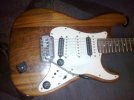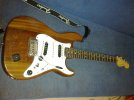Tannhauser
Inspired
I'm on a bit of a DIY kick at the moment, and I've been thinking about maybe trying to make my own pickup.
The parts aren't expensive and can be bought online, and the process looks quite simple.
But, before I go down the rabbit hole, I thought I'd ask if anyone had ever undertaken the project themselves?
Here's a video, for anyone interested:
The parts aren't expensive and can be bought online, and the process looks quite simple.
But, before I go down the rabbit hole, I thought I'd ask if anyone had ever undertaken the project themselves?
Here's a video, for anyone interested:



